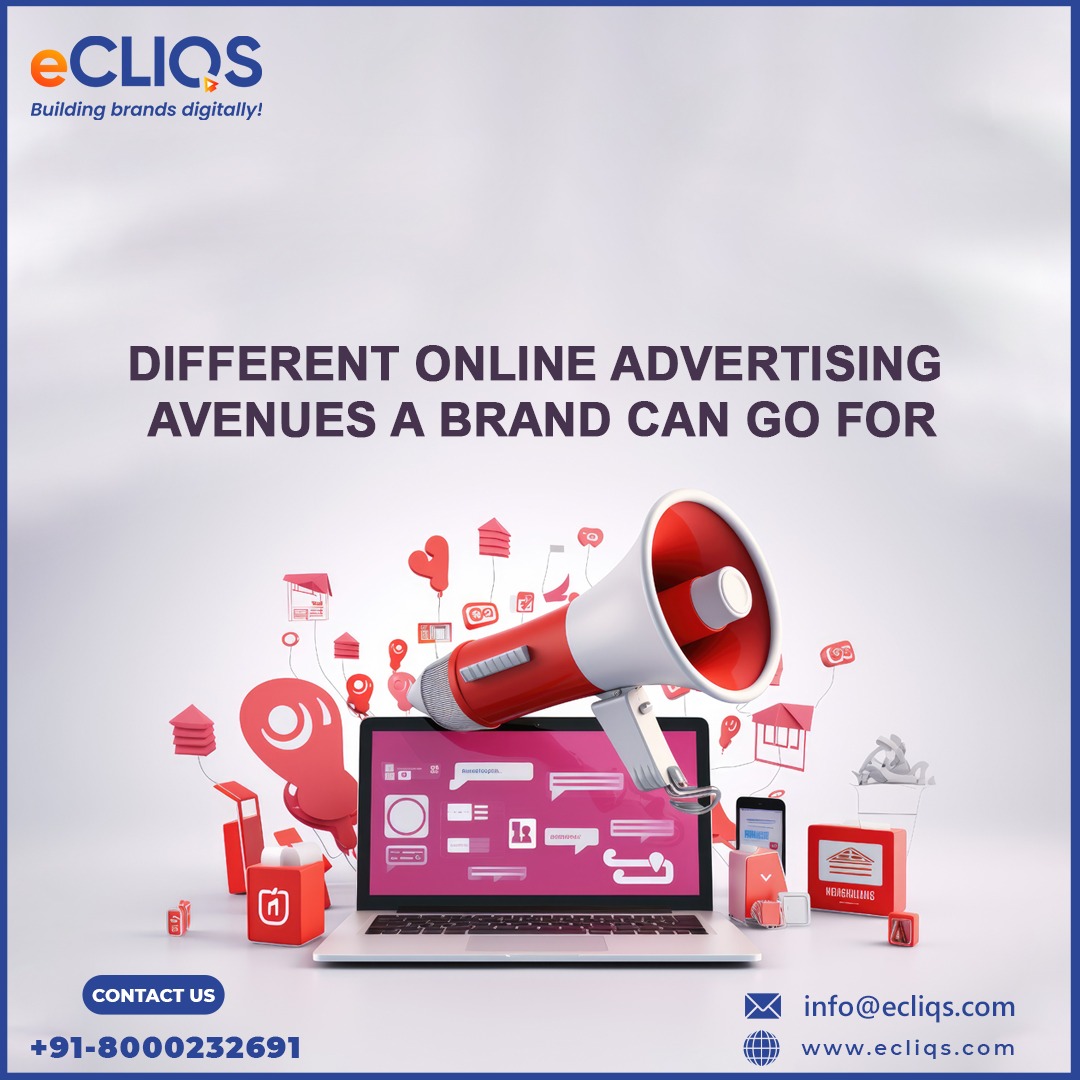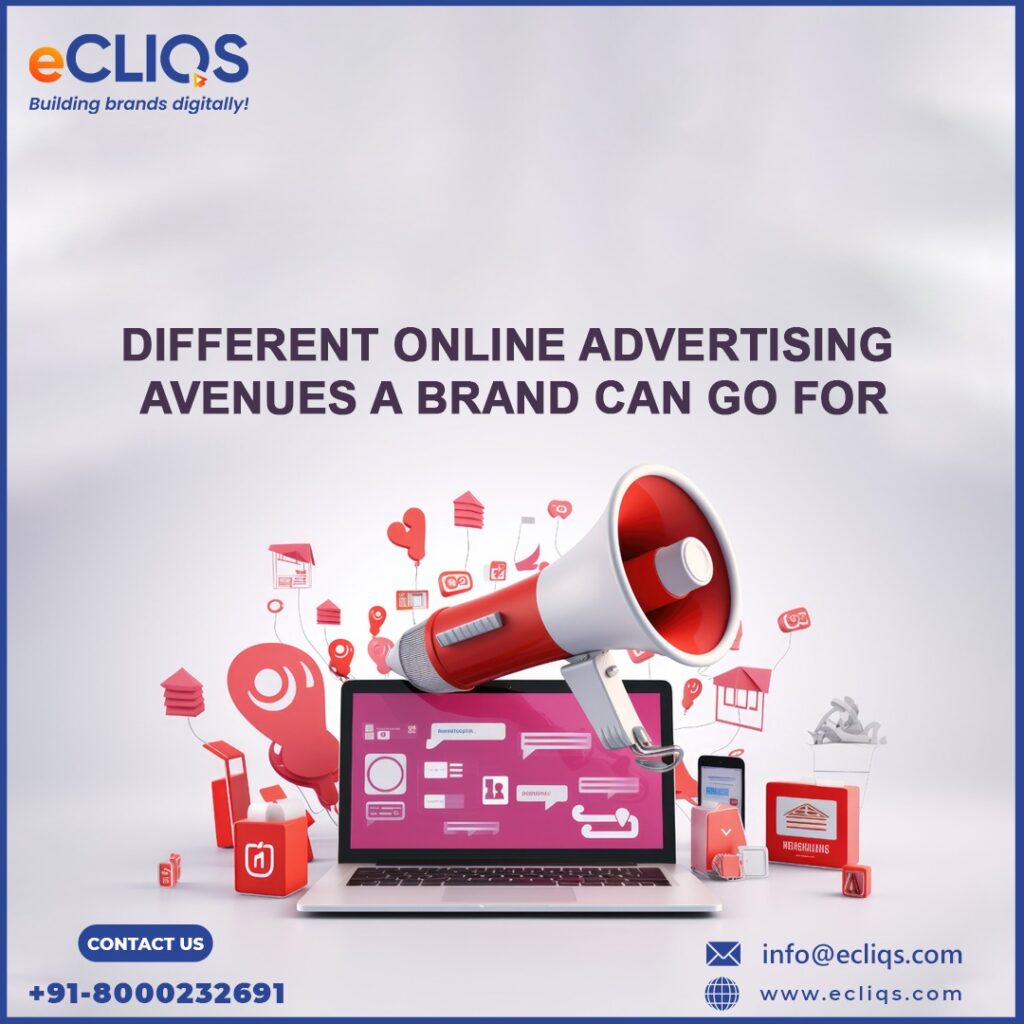
Marketers and advertisers increasingly employ Internet advertisements to promote their brands to both present and potential customers. Unlike traditional marketing, which targets local demographics, online advertisements allow brands to promote their services to worldwide consumers. Learning more about online advertising might help you incorporate it into your marketing strategy. In this post, we will define online advertising, and look at the many sorts that will help you build your knowledge and implement it in your lives.

What is Online Advertising?
Online advertising is a type of marketing that uses the internet to lead consumers to a brand’s website or to promote a product, service, or related task. This assignment could include making a purchase, scheduling a service, or following the brand on social media. Numerous internet platforms meet the requirements of a marketing strategy. To boost brand awareness, marketing teams may use demographic filters in their adverts and pay to have their brand included in internet locations.
9 Types of Online Advertising
Here are seven methods of online advertising you can use:
#1. Paid search advertising
Paid search advertising is a sort of online advertising in which you pay a fee to have your advertisement displayed on a search engine results page (SERP). Pay-per-click advertising (PPC) is one of the most frequent and effective types of online advertising. It advertises the organic results on the SERP, increasing the possibility that a user would click on the link. The SERP places adverts based on several parameters, including:
Landing page quality:
SERP pages frequently look at how you’ve developed a landing page for visitors and whether it’s optimized for people to browse and perform their duties. SERPs prioritize mobile-optimized pages over other pages.
Auction bids:
Companies can bid on keywords or phrases related to the products or services they want to promote using the advertisement space. This way, advertising just pays for each click a user makes.
Keywords:
If a company competes against a rival for paid advertisement placements using slightly different keywords, the company with the more popular keyword will rank higher than the less popular term. Before purchasing a SERP advertisement, you can investigate keyword popularity.
Advertisement extensions:
When you create an advertisement, you can include several links, such as a link to the company’s website and contact us forms. Advertisements that include a link urge visitors to take action, increasing the possibility that they will click through from the advertisement to the website.
Search context:
An advertisement may not appear every time a user searches, particularly if it is unrelated to the company. The advertisement you paid for may appear based on the user’s location, keywords, time, and device used to search.
#2. Social media advertising
Social media advertising is a marketing approach that involves promoting a business, product, or service online via networking sites. On these sites, you can create an advertisement using a variety of formats, including video, photos, and stories. Each social media platform uses its algorithm to create advertisements. You often have to pay a charge to create a social media advertisement.
#3. Display advertising
Display advertising is the marketing of a brand, product, or service using movies or photographs that are uploaded on social networking sites or search engines. The social networking site or search engine places an advertisement through third-party sources, such as a banner, photo, or text. You can divide display adverts into three categories:
Site placement:
With this category, you can select which websites to post advertisements on for users to view.
Contextual advertising
Contextual advertising enables social networking networks to place ads on related websites. For example, if you’re marketing makeup, the platform can show the advertisement on a beauty store’s website.
Re-marketing display advertising
Re-marketing display advertising appears on websites for customers who have departed without making a purchase. This reminds users of the product they were considering, with the hope that they will return to the company’s website to finish the transaction.
#4. Native advertising
Native advertising involves paying a media organization to publish postings featuring a brand’s products. For example, if the company sells skin care goods, a media company can create a piece featuring a list of the top skin care items under a specific price point. In this post, media firms can include their items with other companies that sell similar things. In addition to paying media businesses to write a post featuring your product or service, you can also pay them to share the post on social media, which can help you reach a bigger audience.
#5. Podcast Advertising
Podcast advertising is used by businesses to increase brand awareness, drive consideration, and secure conversions.
Podcast advertising allows your organization to market its products, services, or offers via:
- Baked-in advertisements, which the podcast host(s) read to all listeners.
- Dynamic advertising is dynamically introduced to the podcast based on the listener’s data.
Podcast advertising is a new and successful way to briefly inform listeners about the value of your product, discounts, promotions, personal experiences, and so on. If you do everything correctly, you will earn trust, expand your target audience, reach new demographics, and promote products. Additionally, this sort of advertising generates warm leads. They’re more inclined to purchase from your brand. You achieve higher conversion rates and ROI.
#6. Email advertising
Email advertising is another successful method of advertising online. With email advertising, you promote your business through third-party email newsletters. Email advertising promotes your business through third-party email newsletters.Email advertising, like podcast advertising, involves extra study because you need to:
- Research potential newsletters.
- Reach out to potential prospects.
- Provide all essential documentation or offers.
An email marketer may take advantage of the opportunity of sending emails to an agreed set of users by “renting out” spaces inside the emails to other brands so that they can insert adverts in your campaigns. These other brands can advertise using this space to a targeted audience. You can be this other brand and advertise on this email to get visibility and eyeballs of your targeted audience
What you need to take care of is
- Consider only those newsletters that are targeting your audience
- Check the number of subscribers they have and also their open rate
- Provide any necessary information and offers to lure the readers
#7. Digital signage advertising
Digital signage advertising is a new technology that enables marketers to display animated web adverts on buildings like billboards and bus stations. The technology enables structures to display a continuous loop of particular adverts. This can help you get new consumers who see your advertisement on a sign while walking or driving past it.
#8. Programmatic Advertising
Programmatic advertising uses artificial intelligence to automate ad buying. Programmatic advertising networks can purchase the optimum ad space for your company if provided with audience-targeting information such as location, time of day, and interests.
Google, Kellogg’s, and the Intercontinental Hotel Group (IHG) have all experienced success with this digital advertising technique but the good thing is that you don’t have to be a huge, well-known business to implement and/or afford programmatic advertising. Programmatic ads are suitable for businesses of all sizes, making them one of the most effective Internet advertising techniques.
#9. Amazon Advertising
Amazon Advertising is a service that works similarly to Google’s pay-per-click ads: sellers only pay when customers click on adverts, regardless of whether the item sells.
Amazon’s advertising business is rapidly expanding, particularly as it diversifies its offerings across its ecosystem. The Amazon Demand Side Platform enables retailers to programmatically buy display and video advertisements at scale and target audiences on Amazon.com, Fire TV Sticks, IMDb.com, Kindles, Freedive, apps, third-party sites, apps, and platforms.
Summary
In this blog, we covered the seven most common types of Internet advertising: paid search advertisements, display ads, native ads, social media ads, digital signage ads, podcast advertising, programmatic advertising, amazon advertising, and email ads. While we only quickly covered the main types this time, stay tuned for additional in-depth posts on each channel.
Finally, while selecting an advertising media, it is best to establish your target demographic, advertising budget, and investigate which channel your audience is most likely to be active on, and then base your decision on that. Every business and consumer base will be unique, therefore you must choose the medium that best suits you and your current circumstances.


